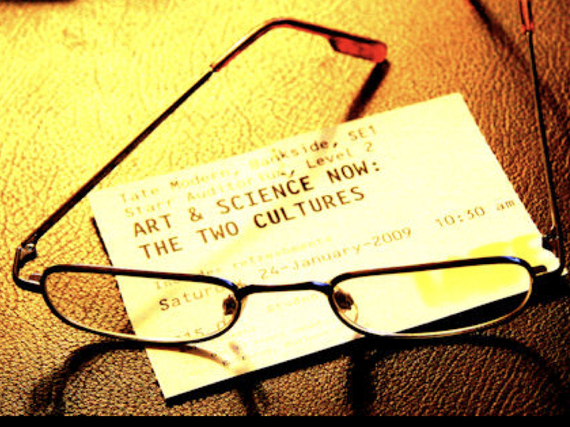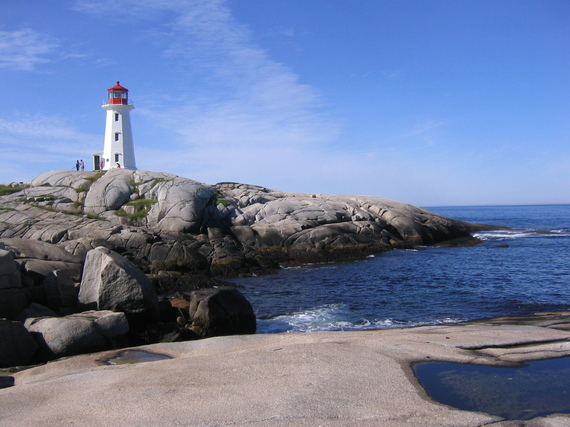At the "Alliance for the Arts in Research Universities" (a2ru) conference this month in Denver, representatives from over 30 member universities talked about the need to reinvent the college curriculum, and retrain faculty too. Our students, many said, need the new thinking skills for the new economy or they will fail to get a job. The so-called "jobless recovery " will march on but with fewer and fewer American kids. 
Design Thinking, made famous by Stanford's D School and Project-Based Learning are being discussed by educators as teaching methodologies to change the way teachers teach and students learn, but using the arts and arts integration, teaching through the arts, has the most potential to change the basic curriculum.
Taken together, these techniques will engage students; enhance their memory and retention. Importantly, it will give them the skills they need to compete in an economy that values not just knowledge but creativity that leads to innovation.
Yes, there are other ways to generate creativity but as Laurie Baefsky, an extremely talented executive with skills in the arts, education and conference management, and Executive Director of a2ru put it: "arts integration is the bullet train" to acquiring creativity.
Fortunately, in the wake of basic changes in the world's economy - revolutionized by the Internet and its progeny - the World Wide Web - many schools and particularly colleges and universities are rethinking the role of the arts and arts integration in the curricula. They hesitate at their peril, however, as never in the history of the world has reinventing education been so urgent and embracing arts integration so vital.
While the arts and arts integration, according to the College Board, have always enhanced and developed critical thinking in students, integrating the arts into the curriculum has taken on a new urgency because of the rapid advance of a global economy, and the worldwide spread of the Internet and digital media.
Globalization 3.0, marked by the birth and worldwide spread of the web has shrunk the world and the workplace-has allowed individuals all over the world to talk, work and enjoy leisure activities. But it has also enabled every nation, every community and every individual to compete with every other nation, community and individual as never before. Outsourcing, off shoring and automation are changing the workplace even more and a race to reinvent our systems of education has begun.
It's not pretty.
The Internet and the Worldwide Web will continue to invite communities and individuals from around the world to compete but it is automation that will demolish the US workforce. Over the next 20 years, according to an Oxford Research report detailed in the MIT Technology Review, we will witness what they have described as "Tectonic Shifts in Employment (where) information technology is reducing the need for certain jobs faster than new ones are being created." The Oxford researchers found that "nearly half of all jobs are vulnerable to machines-to applications using information technology." It was predicted that over 45% percent of the jobs that exist today would be gone-forever.
a2ru is one of this nation's leading advocates for change. It is also one of the most influential organizations that understand the power of the arts and arts integration thus making any subject-whether it's math or science or whatever-engaging and memorable.
It also understands that business especially wants to see those skills in future employees.Indeed, after a study involving over 1500 corporations, the Conference Board - an international nonprofit business research organization - released "Ready to Work" in which it reported that 98% of the companies surveyed identified "creativity and innovation" as among the top five skills that were looking for in new employees and that they "ranked creativity and innovation among the top challenges facing CEOs." Confirming their assessment, IBM also reported that, "creativity is now the most important leadership quality for success in business, outweighing even integrity and global thinking."
a2ru is fully cognizant that change-any change-isn't easily accepted in the academy. Faculty members who have invested years in research and are rightly proud of the sophistication and depth of their specialties are more reluctant to acknowledge the relevance of competing disciplines and, therefore, hesitant to engage in collaboration, as is usually required when doing art integration, essentially course redesign. But they too are making the change in redesigning their courses.
Key to "achieving the scale and momentum required for significant impact on the future" a2ru argues, are "strategic relationships." 
On one scale, the University of Iowa, the University of Texas at Dallas, the University of Colorado in Denver and San Diego State University with its experiment "stacking courses" in the arts with biology or physics professors, all made presentations on how they are bringing art and science together and in turn creating interdisciplinary curricula that gives relevancy to the larger education mosaic.
But such collaboration has its barriers and obstacles to success. Even value systems of the engineer and the artist may be different one speaker readily acknowledged. The older, tenured professor may simply not welcome the change either, despite the call for more integrated courseware, more interdisciplinary curricula.
STEAM not just STEM (for science, technology, engineering and math), for example, is often discussed, as it was at the Denver conference, but frankly, these terms are only placeholders for new techniques and new curricula, a whole new formula for future learning in the new economy.
There is clearly a need for representation from the whole university- in particular the science faculty-and from the leadership too. This would accelerate development of new education formulas, and encourage more art and science collaborations.
Next year, a2ru, the International Council of Fine Arts Deans (ICFAD), the Association of Independent Colleges of Art and Design(NASAD), and the Canadian Association of Fine Arts Deans(CAFAD) will be meeting in Halifax, Nova Scotia.
This event marks an important effort by these organizations to strengthen the commitment to reinvent the university. Laurie Baefsky is hopeful. Other organizers may see this as just another conference but this is a chance to meet and talk about the critical importance of art integration in the college and university of the future. Surely, many will see the opportunities. If a more focused agenda and an organizational commitment to work together is the result, this event will be a major accomplishment.
